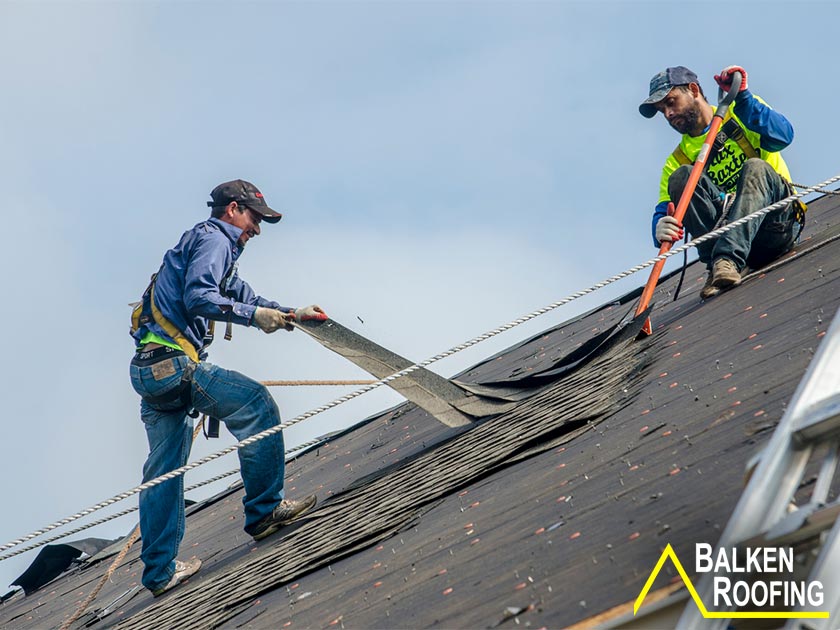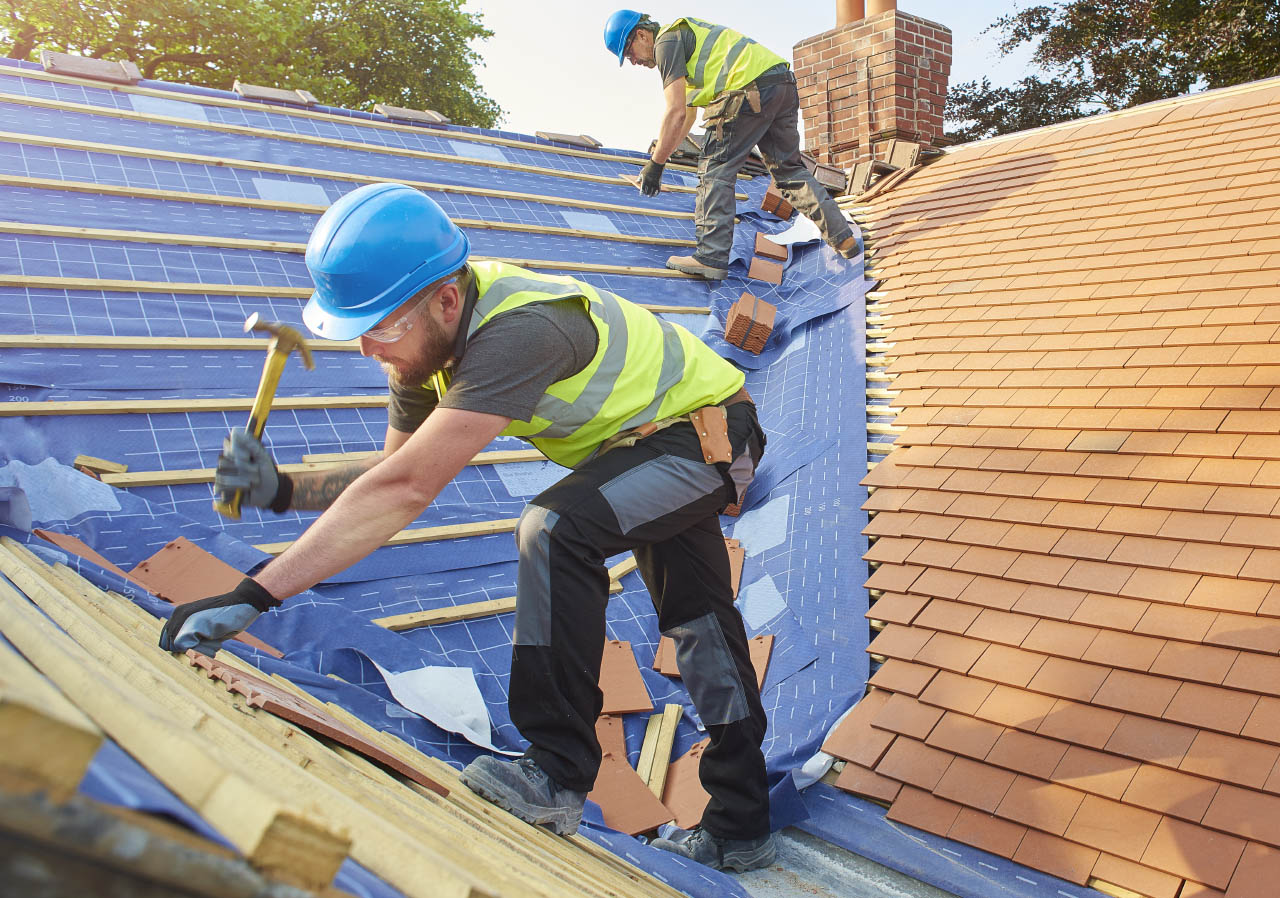Understanding the Various Sorts Of Roofings: A Comprehensive Overview for Homeowners
In the world of homeownership, picking the ideal roofing style is a decision that carries significant implications for both performance and visual allure. With a selection of alternatives-- varying from the standard gable to the modern level-- each kind presents unique benefits and challenges that ought to line up with the property owner's environmental factors to consider and details needs. Recognizing these distinctions not only aids in making an enlightened choice but also affects long-lasting upkeep and energy efficiency. As we explore the ins and outs of numerous roof types, it becomes obvious that a person dimension does not fit all; the ideal option might shock you.
Gable Roofing Systems
Gable roofings, characterized by their triangular form, are amongst the most preferred roof styles because of their simplicity and effectiveness in losing water and snow. This layout features two sloping sides that satisfy at a ridge, enabling efficient water drainage and reducing the danger of water buildup. The high pitch typically connected with gable roofs boosts their capacity to take care of heavy rainfall, making them ideal for different environments.
Along with their practical advantages, gable roofing systems provide aesthetic convenience. They can be adapted to different building styles, from traditional to contemporary homes. The layout can likewise suit added functions such as dormer home windows, which improve natural light and air flow in the attic room room.
In addition, gable roof coverings offer sufficient space for insulation, contributing to power effectiveness. Homeowners can select from a variety of roof products, including asphalt roof shingles, steel, and ceramic tiles, even more boosting modification choices.
Despite their advantages, saddleback roofs might call for extra support in areas vulnerable to high winds or hefty snowfall. Generally, the gable roofing system stays a preferred selection as a result of its blend of capability, longevity, and visual allure.
Flat Roofs
Level roofing systems are typically identified for their minimal design and practical applications, specifically in business and commercial setups (oahu roofing). These roof coverings include a virtually straight or straight surface area, which enables very easy building and functional room usage. While they might lack the aesthetic allure of pitched roofing systems, level roofings supply numerous benefits, especially in metropolitan environments where maximizing space is crucial
One of the main benefits of level roof coverings is their availability. House owners can utilize the roof covering space for numerous objectives, such as rooftop yards, terraces, or solar panel installments. Additionally, flat roofs are commonly more cost-efficient to keep and install contrasted to their sloped equivalents, as they need fewer products and labor.
Usual products used for flat roofings include built-up roof (BUR), modified asphalt, and single-ply membranes, each offering unique benefits. Overall, level roofs serve as a functional and versatile selection for many homeowners and organizations alike.
Hip Roof Coverings
Hip roofs are defined by their sloped sides that assemble at the top, developing a ridge. This style is distinct from saddleback roofs, as all four sides of a hip roofing slope downwards towards the walls, giving a more secure framework. The angle of the slopes can differ, enabling adaptability in building aesthetic appeals and performance.
One of the main benefits of hip roofing systems is their ability to stand up to heavy winds and negative weather. The sloped surfaces make it possible for much better water drain, reducing the risk of leakages and water damages. In addition, hip roofing systems supply boosted attic room area, which can be utilized for storage and even transformed right into livable areas.
However, building find more information a hip roof covering can be much more costly and complicated than easier roof types, such as saddleback roofs. The additional product and labor associated with producing the inclines and guaranteeing correct architectural stability can cause greater expenditures. In spite of these downsides, many property owners favor hip roof coverings for their resilience, visual charm, and capacity for energy efficiency.
Mansard Roofing Systems
Mansard roofings, frequently acknowledged by their distinct four-sided style, function 2 inclines on each side, with the reduced slope being steeper than the upper. This building style, originating from France in the 17th century, is not only cosmetically attractive but useful, as it maximizes the usable room in the top floorings of a structure. The steep lower incline permits for even more headroom, making it an ideal choice for lofts or attics, which can be exchanged living areas.
Mansard roof coverings are identified by their adaptability, suiting various architectural designs, from standard to modern-day. They can be built with different products, consisting of asphalt shingles, slate, or metal, providing house owners with a series of alternatives to match their spending plans and preferences. Additionally, the layout permits for the assimilation of dormer windows, boosting all-natural light and ventilation in the upper degrees.
Nonetheless, it is vital to think about the prospective disadvantages. Mansard roofs might call for even more upkeep as a result of the complexity of their design, and their high slopes can be challenging for snow and rainfall runoff. In general, mansard roof coverings combine beauty with usefulness, making them a popular choice amongst home owners looking for distinct building attributes.
Shed Roofing Systems
As homeowners significantly seek simpleness and capability in their architectural layouts, dropped roof coverings have become a popular selection. Identified by a solitary sloping airplane, a shed roofing offers a minimalist visual that enhances various home designs, from contemporary to rustic.
One of the main advantages of a shed roof is its straightforward building and construction, which typically translates to decrease labor and product costs. This layout enables for effective water drainage, minimizing the threat of leaks and water damages. In addition, the vertical slope offers adequate space for skylights, improving all-natural light within the interior.
Dropped roofings also use flexibility in terms of usage. They can be efficiently integrated right into enhancements, garages, or outside structures like pavilions and sheds. Moreover, this roof style can accommodate various roof materials, including steel, asphalt tiles, look at these guys or also environment-friendly roofings, straightening with green efforts.
However, it is essential to take into consideration regional climate problems, as hefty snow tons might necessitate adjustments to the roof's angle or structure. In general, shed roofs offer a sensible and aesthetically pleasing option for homeowners looking to optimize capability without compromising style.
Verdict


Gable roof coverings, defined by their triangular form, are among the most prominent roofing designs due to their simpleness and effectiveness in dropping water and snow. oahu roofing. The high pitch generally linked with gable roof coverings enhances their capability to take care of heavy rainfall, making them suitable for different environments
While they might lack the visual allure of pitched roofing systems, level roofings supply various benefits, especially see this in city atmospheres where making the most of room is crucial.

Comments on “Roofers Oahu: Specialist Roof Installations and Fixes”